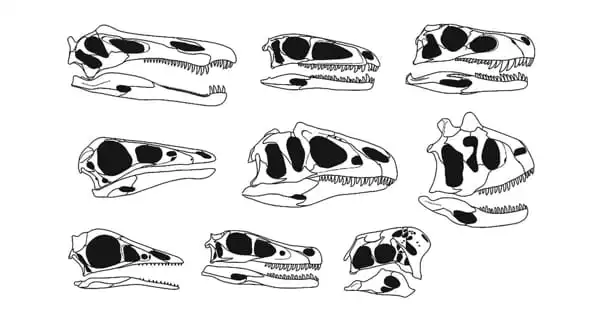The octopus finds it challenging to choose only one trick. It uses jet propulsion to swim, fires inky chemicals at its enemies, and has the ability to quickly change its skin color to blend in with its environment.
Researchers from the University of Oregon are looking into this eight-armed marine animal’s exceptional vision, which is another another distinguishing trait.
In a recent study, they present a comprehensive map of the octopus’s visual system by categorizing several varieties of neurons in a section of the brain responsible for vision. The map serves as a resource for other neuroscientists by providing information that might direct future research. Additionally, it may help us understand more widely how our brains and visual systems have evolved.
The team reports their findings October 31 in Current Biology.
Cris Niell’s lab at the UO studies vision, mostly in mice. But a few years ago, postdoc Judit Pungor introduced the California two-spot octopus, a new species, to the lab.
Even though cephalopods aren’t often employed as test subjects in laboratories, UO neuroscientists were immediately intrigued by this one.
Unlike mice, which are not known for having good vision, “octopuses have an amazing visual system, and large fraction of their brain is dedicated to visual processing,” Niell said. “They have an eye that’s remarkably similar to the human eye, but after that, the brain is completely different.”
Octopuses and people shared a last common ancestor 500 million years ago, but since then, the two species have developed in vastly distinct environments. Therefore, it was unclear to scientists if the similarities in visual systems went beyond the eyes or whether the octopus used entirely distinct types of neurons and brain circuits to achieve the same effects.
There are a lot of genes where we have no idea what their function is, because we haven’t sequenced the genomes of a lot of cephalopods.
Judit Pungor
“Seeing how the octopus eye convergently evolved similarly to ours, it’s cool to think about how the octopus visual system could be a model for understanding brain complexity more generally,” said Mea Songco-Casey, a graduate student in Niell’s lab and the first author on the paper. “For example, are there fundamental cell types that are required for this very intelligent, complex brain?”
In this case, the team employed genetic methods to distinguish various varieties of neurons in the octopus’s optic lobe, the area of the brain responsible for vision.
Based on the chemical signals that each type of neuron sends, they identified six major classes of neurons. Then, additional subtypes were discovered, offering hints at more precise responsibilities, when certain genes’ activity was examined in those neurons.
In certain instances, the researchers were able to identify specific groups of neurons in distinctive spatial configurations, such as a ring of neurons around the optic lobe that all communicate utilizing the octopamine signaling chemical. When the fly is active, it uses this chemical, which is related to adrenaline, to enhance visual processing. Therefore, it might play a similar role in octopuses.
“Now that we know there’s this very specific cell type, we can start to go in and figure out what it does,” Niell said.
In the results, almost a third of the neurons didn’t appear to be entirely mature. Over the course of the animal’s lifetime, the octopus brain continues to expand and add new neurons. These young neurons, which have not yet been incorporated into brain circuits, were an indication that the brain was developing.
However, contrary to what the researchers had anticipated, the map did not show any clusters of neurons that had clearly migrated from human or other mammalian brains.
“At the obvious level, the neurons don’t map onto each other they’re using different neurotransmitters,” Niell said. “But maybe they’re doing the same kinds of computations, just in a different way.”
Gaining more knowledge about cephalopod genetics will also be necessary to go deeper. According to Gabby Coffing, a graduate student in Andrew Kern’s lab who worked on the project, many of the techniques that are used for precise genetic manipulation in fruit flies or mice don’t yet exist for the octopus because it hasn’t historically been utilized as a lab animal.
“There are a lot of genes where we have no idea what their function is, because we haven’t sequenced the genomes of a lot of cephalopods,” Pungor said.
Without genetic data from related species as a point of comparison, it’s harder to deduce the function of particular neurons.
Niell’s team is up for the challenge. In order to see whether some of the genes they focused on in this study appear elsewhere in the brain, scientists are currently mapping the octopus brain beyond the optic lobe. In order to understand how the neurons in the optic lobe process the visual scene, they are also recording from these neurons.
In due course, their research may help to clear up some of the mystery surrounding these fascinating marine creatures and shed some light on how we ourselves evolved.
















